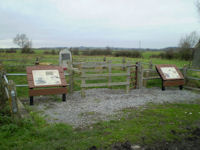

Plate 3: Tub of musket balls and other signature artefacts recovered from the battlefield of Philiphaugh
Plate 4: The battlefield of Sedgemoor, Somerset
There is little doubt that the unrecorded removal of artefacts from sites of conflict lies at the heart of impacting activity. The wholesale removal of artefacts from sites of conflict by metal detecting activity results in the gradual erosion of the artefact scatters that define the archaeological character of the battlefield. A box full of musket balls may indicate that some form of military activity has occurred in the area; however, without the corresponding distribution map detailing the position of each artefact, that box of musket balls holds relatively little archaeological value (Plate 3). This is a picture recognised across many battlefields in the UK, including the Battle of Sedgemoor (Plate 4). Here Pettet, whom we met earlier, has had several encounters with metal detectorists who he refers to with unreserved scorn as 'treasure hunters'. This is due to the damage he believes they have done to the battlefield because, as he states, they 'don't care about recording or filling in holes they have dug' (Pettet pers. comm.). He estimates that between 2007 and 2009, at least seven metal detectorists have visited the battlefield and that approximately 500 musket balls have been removed unrecorded and placed in pockets, plastic tubs and even buckets. Pettet has even observed one regular visitor recovering a significant number of musket balls from a core area of the battlefield, only to place them in a spaghetti jar later. He is said to have used them subsequently at a charity function for a 'guess how many in the jar' competition.


Plate 3: Tub of musket balls and other signature artefacts recovered from the battlefield of Philiphaugh
Plate 4: The battlefield of Sedgemoor, Somerset
In the vast majority of cases, this activity should not be viewed universally as malicious damage but simply as a failure to recognise that an artefact held within the ploughsoil may be spatially interconnected with other artefacts. This apparent lack of awareness of the presence of artefact scatters may in part be due to the fact that battlefields are not predominantly visible within the landscape, unlike many archaeological sites that are defined by upstanding remains. Therefore, unlike removing stones from a chambered cairn, removing artefacts from a battlefield can be difficult to quantify as it may not have an immediate visual impact. Added to this is a focus within hobbyist metal detecting on the individual artefact rather than considering the potential of it forming part of a wider assemblage of material. The rationale behind artefacts as isolated finds may stem from the assumption, also shared by many archaeologists, that the ploughsoil represents a turbulent environment in which artefacts are highly mobile and therefore should be considered as 'stray finds'; in this scenario logic dictates that the object itself must hold more value than the find spot. This impression of the ploughsoil as a rolling ocean is inaccurate, as although movement does occur, research carried out within the ploughsoil horizon has demonstrated that the movement of artefacts is more likely to be vertical than horizontal, a result further compounded by the successful analysis of battle-related artefact distributions (Haselgrove 1985; Pollard 2009, 194).
Internet Archaeology is an open access journal based in the Department of Archaeology, University of York. Except where otherwise noted, content from this work may be used under the terms of the Creative Commons Attribution 3.0 (CC BY) Unported licence, which permits unrestricted use, distribution, and reproduction in any medium, provided that attribution to the author(s), the title of the work, the Internet Archaeology journal and the relevant URL/DOI are given.
Terms and Conditions | Legal Statements | Privacy Policy | Cookies Policy | Citing Internet Archaeology
Internet Archaeology content is preserved for the long term with the Archaeology Data Service. Help sustain and support open access publication by donating to our Open Access Archaeology Fund.
File last updated: Thu Feb 28 2013